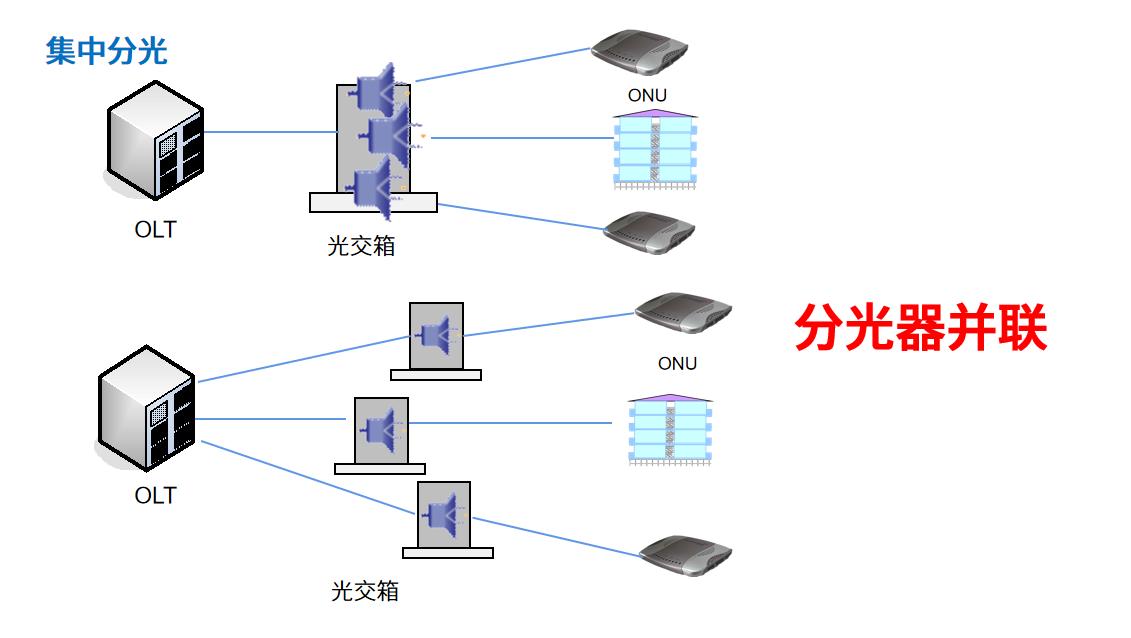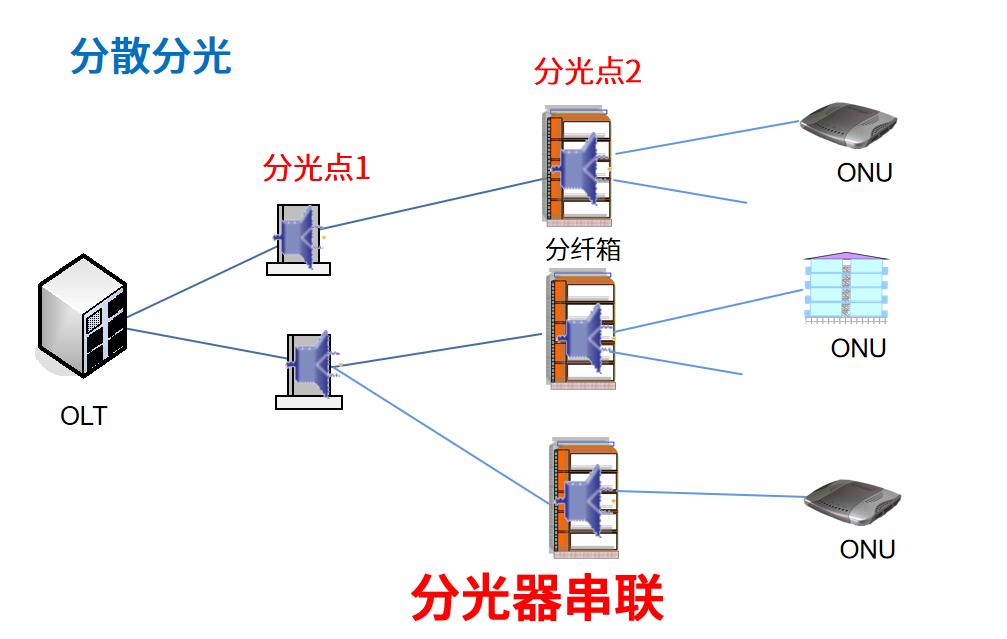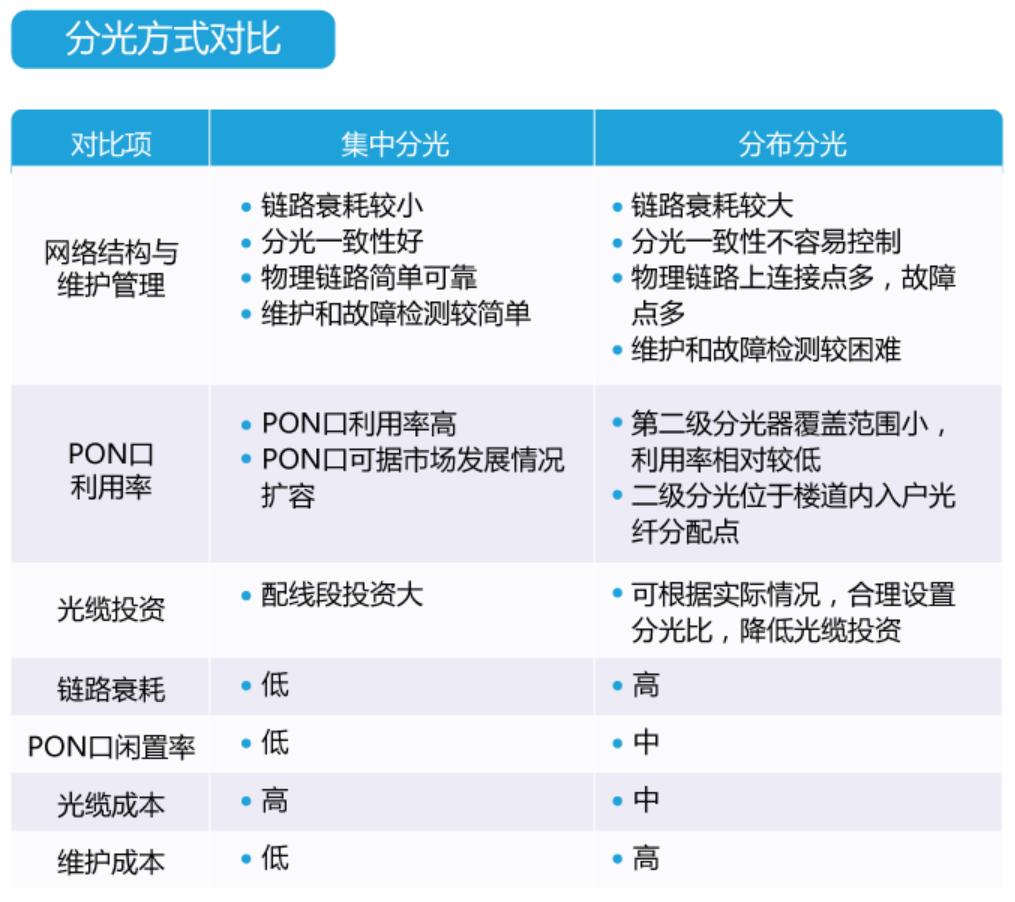The mode of optical splitting can be divided into concentrated optical splitting and distributed optical splitting.
In network construction, it is necessary to select an appropriate splitting mode according to different situations such as the structure of residential area, user density, and corridor distribution, so as to achieve the goal of least investment, highest return, and efficient construction.
Concentrated optical splitting means that the OLTs are placed in the central computer room, and all the optical fibers are led out from the central computer room, or a small amount of feeder cables are led out to a centralized point, such as an optical cross box. And optical distribution cables and fiber to the home (FTTH) are then led out from the optical cross box to the user's home through an optical splitter. And between the OLT and the ONU, all the optical splitters are distributed in parallel, and the structure is that the OLT leads out the optical cable to the optical splitter and then to the user's home.

Distributed optical splitting means the scattered placement of optical splitters, usually with two levels of optical splitting points. And a building or a certain area is used as a optical splitting point, and a feeder cable is drawn from the OLT to the optical splitting point, and then led out from another optical splitting point to user's home. Between the OLT and the ONU, the optical splitter is connected in series, and the structure is OLT- optical splitter 1- optical splitter 2-ONU.

Distributed and concentrated optical splittings have different characteristics.
For concentrated optical splitting, the physical link is simple and reliable, the loss is small, the maintenance and troubleshooting are less difficult, and the utilization rate of the PON port is high. However, due to the large investment in the wiring section, the cost of the optical cable is high.
For distributed optical splitting, the physical link has many connection points with large loss, and it is relatively difficult to maintain and detect faults. The cost of optic cables is relatively low.
In network construction, it is necessary to select an appropriate optical splitting mode according to different situations such as the structure of residential area, user density, and corridor distribution.

Compare the methods of optical splitting
| Compared items | Concentrated optical splitting | Distributed optical splitting |
| The network structure and maintenance and management | Smaller link loss. Good consistency of optical splitting. Physical link is simple and reliable. Maintenance and fault detection are relatively simple. | Bigger link loss. The consistency of optical splitting is not easy to control. Many link points on the physical link and more faulty points. Maintenance and fault detection are more difficult. |
| Utilization of PON port | The utilization of PON port is high. The number of PON port can be increased according to the market development. | The secondary optical splitter has a small coverage and a relatively low utilization. The secondary optical splitter is located in the distribution point of FTTH in corridor. |
| The investment of optic cable | Big investment in the wiring section. | According to the actual situation, the splitting ratio can be adjusted so as to reduce cable investment. |
| Link loss | Low | High |
| Idle rate of PON port | Low | Middle |
| Cost of optical cable | High | Middle |
| Maintenance cost | Low | High |